

Stories At Sea
R/V Atlantis 05/01/23 - 06/09/23
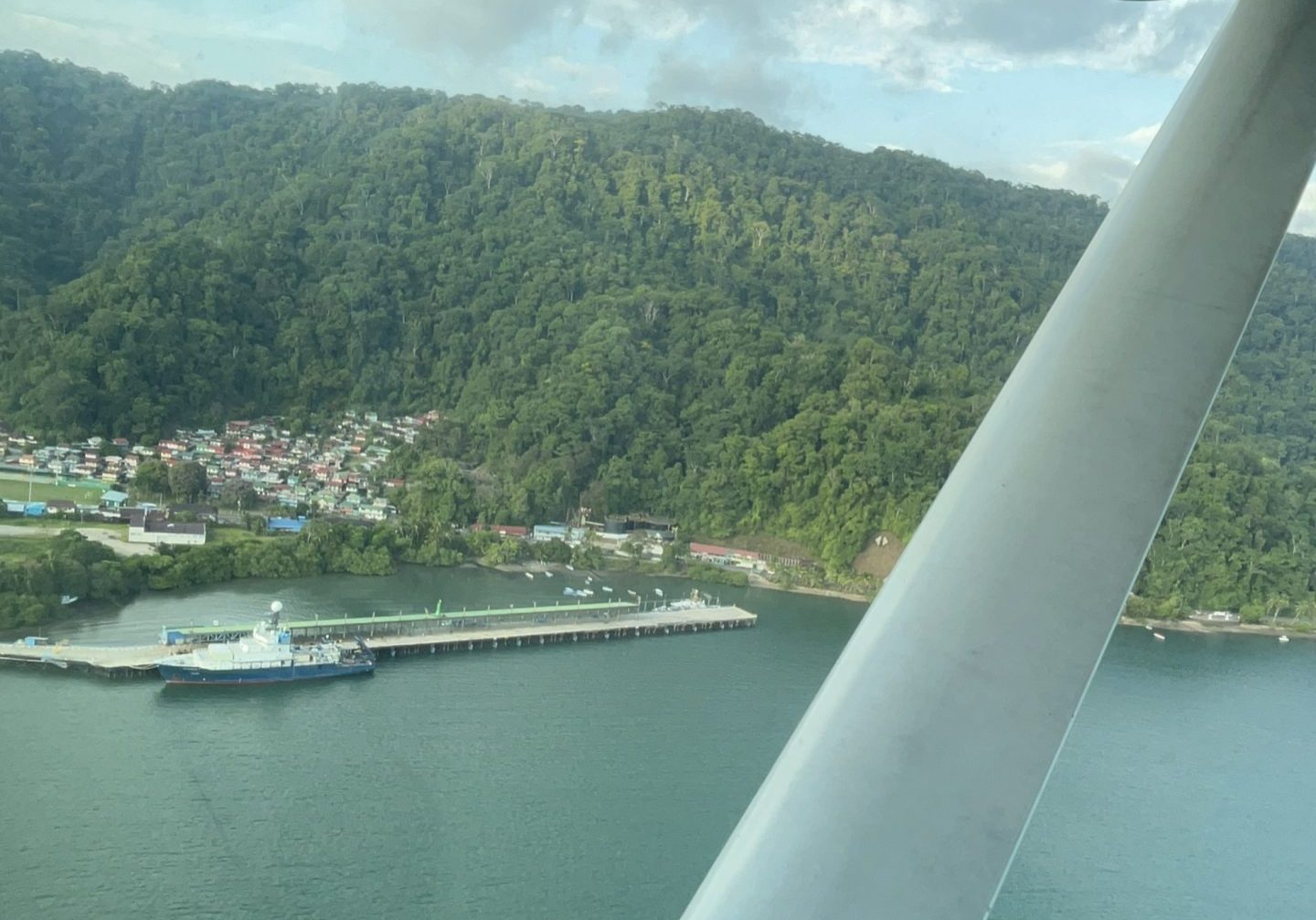
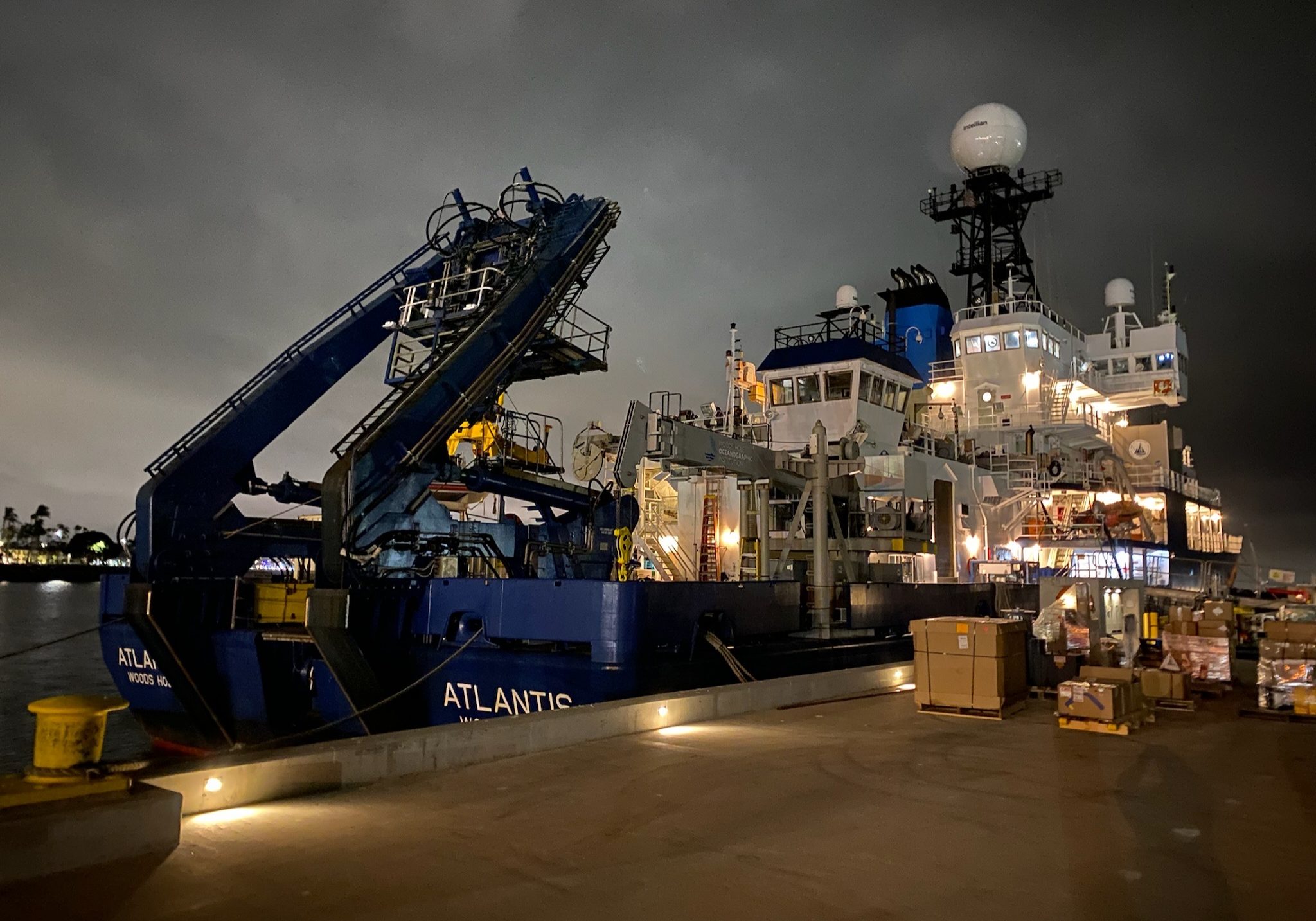
These images show the Research Vessel Atlantis. The image on the left is a birds eye view of the ship taken from a plane. The image on the right is a closeup of the ship taken from the dock.
Working and living aboard a scientific research vessel is a unique opportunity for those in the ocean sciences and engineering fields. There are many reasons scientists and engineers go out to sea. Scientists might go out to collect samples to bring back to the lab for analysis, or they might be heading out to deploy instruments that will send data back to land, or they might be monitoring an observation site. Going out to sea allows scientists to collect environmental data in real time. I recently completed a 6 week cruise on the R/V Atlantis where I was studying how photosynthetic organisms uptake and utilize carbon dioxide.
Being on a research vessel feels like living on a tiny floating island. In most cases, the only in-person interactions you have are with the people on the ship. In recent years, the internet on research vessels has gotten much more advanced, but it can still feel isolating to not be directly connected to the rest of the world, or even just your community back home. Cruises are an excellent opportunity to become close to the people you’re working with. I went out to sea with three people who I previously considered acquaintances, but now think of as great friends.
When you say “cruise” what do you mean?
Scientists love to shorten the names of everything, and oceanographers have dubbed the term “cruise” to mean oceanographic expedition. Some groups even come up with funny names for their cruise. My cruise was called CliOMZ, because we were working with our autonomous vehicle Clio in Oxygen Minimum Zones (OMZ).
Research vessels are much more industrial than one might typically think of when you think of the word ‘cruise’. Instead of a shuffleboard deck, we have an aft deck equipped to deploy instruments that weigh hundreds of pounds. Most research vessels also have work spaces for scientists to set up their lab stations, allowing them to do some of the same analysis they would do in their lab on shore.
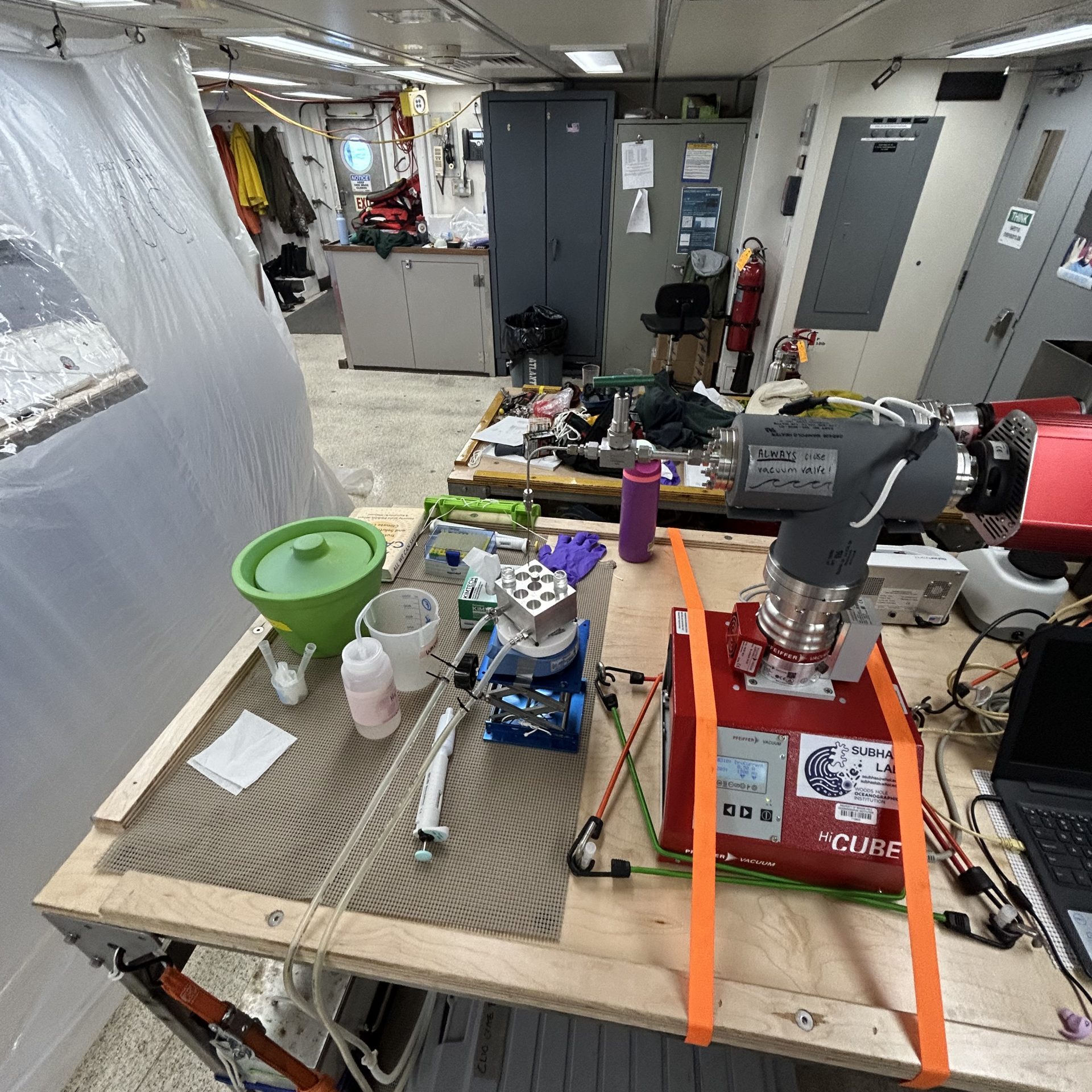
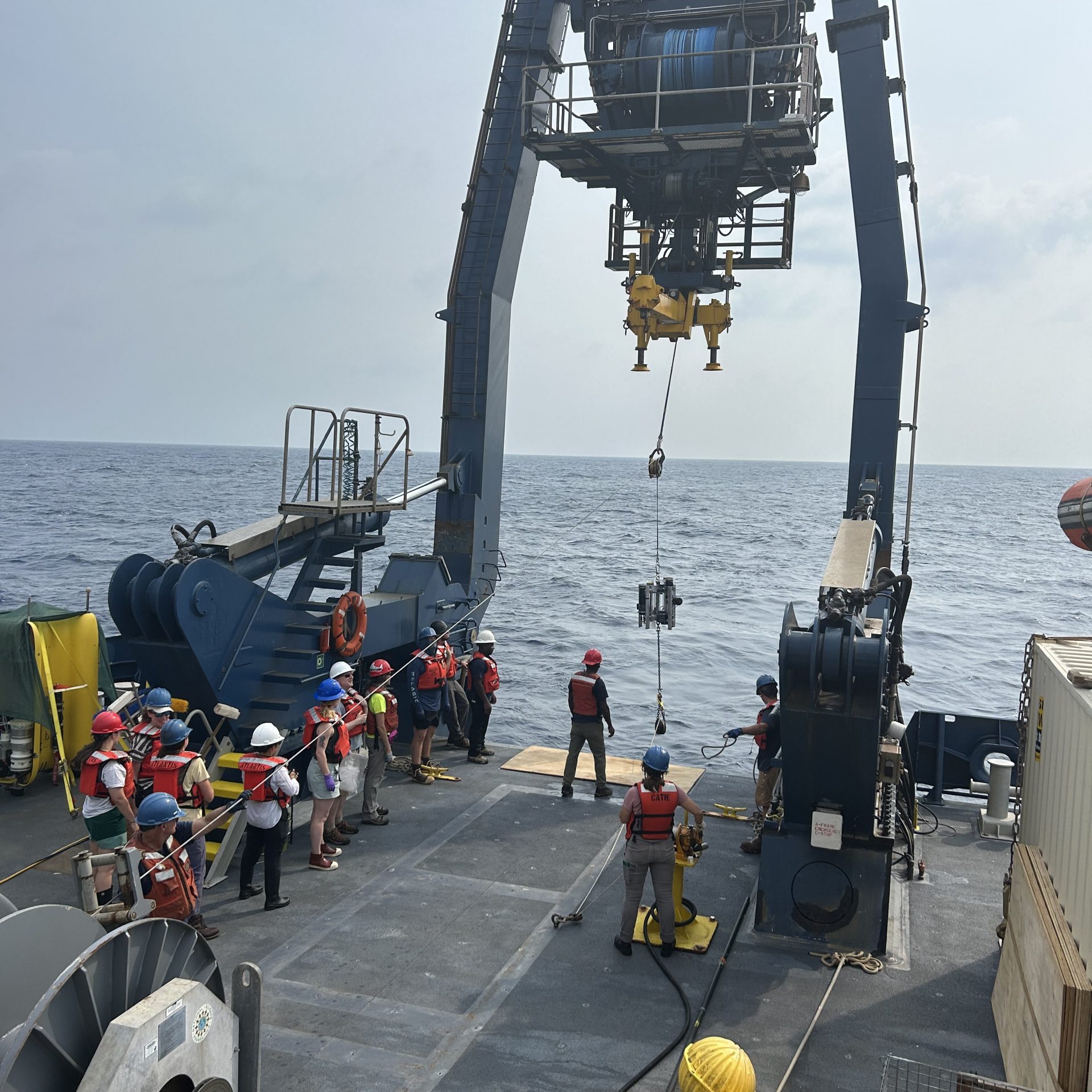
The image on the left is Emily’s workstation. The instrument is their mass spec, which they use to analyze filter samples acquired from Clio and McLane pumps. The right image is a view of the aft deck of the R/V Atlantis during a sediment trap deployment. Many research vessels are equipped with an A-frame, which is used in instrument deployments.
What are the different instruments that get deployed?
On our cruise, we had a schedule of instrument deployments at each station. The end product from our cruise will be a robust suite of trace metal and macronutrient depth profiles, proteomic analyses, and many other experimental results all within our study area, which was the water column within the Costa Rica Dome area. These data are super interesting to us because the Costa Rica Dome is known for being highly productive (meaning there are a lot of nutrients for photosynthetic organisms to utilize), and we want to get a better sense of how these organisms are using the nutrients.
The main highlight of this cruise was our autonomous underwater vehicle (or AUV for short), Clio. Clio is an untethered, refrigerator-sized instrument that collects and filters seawater. Typically, Clio is programmed to filter water every 30 meters between the depths of 5 and 600 meters, and each sample takes approximately 45 minutes to collect. Clio’s predecessor is an instrument called a McLane pump. McLane pumps have the same purpose of filtering water at specific depths, but are not autonomous, which makes the deployments more laborious. We would tether 7 pumps roughly 500 meters apart on a winch, meaning, we have to wait between each pump. In total, it usually took roughly an hour and a half to deploy all 7 pumps and send them down to the correct depth, they would pump in the water column for four hours, and then it would take another hour and a half to get the pumps back onto the ship.
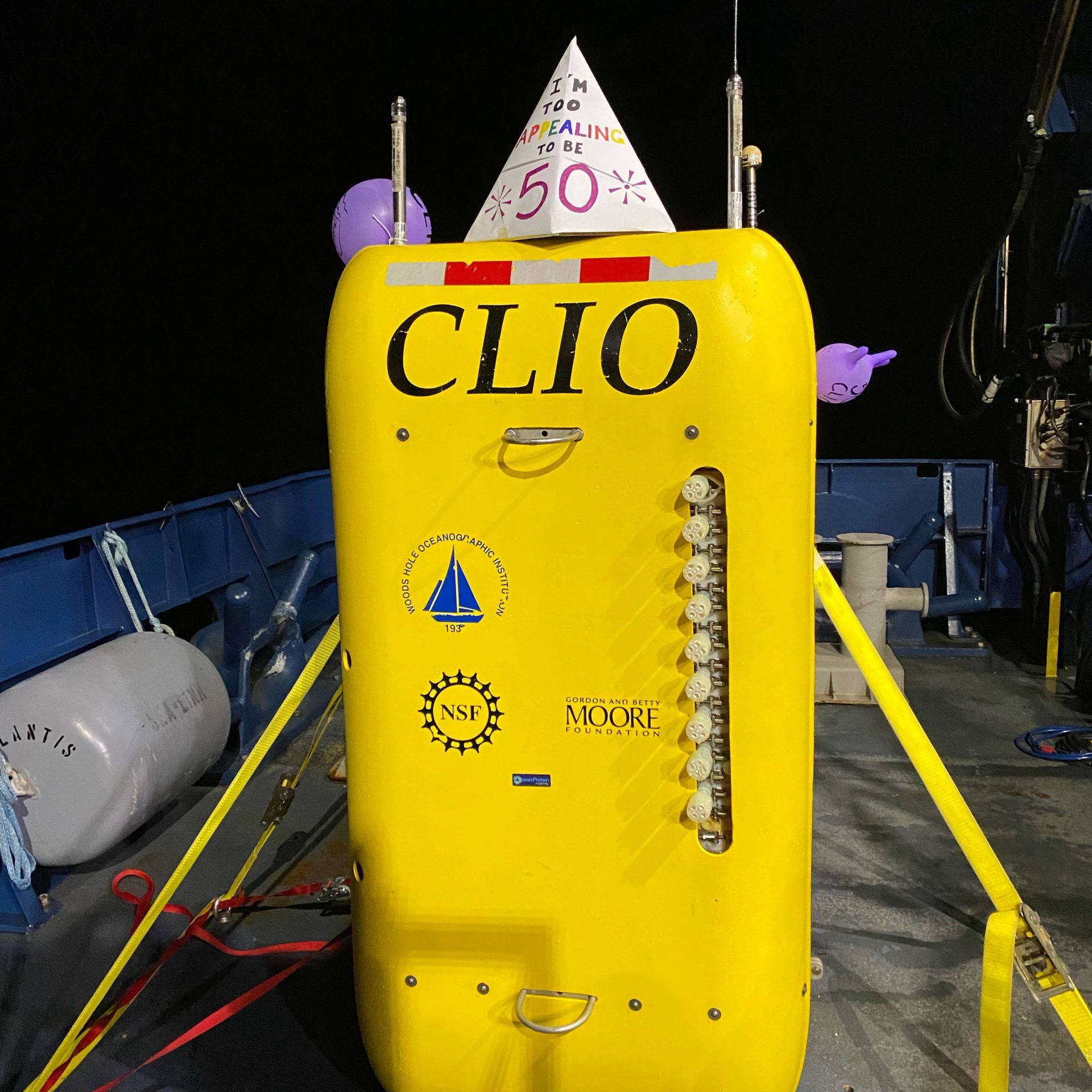
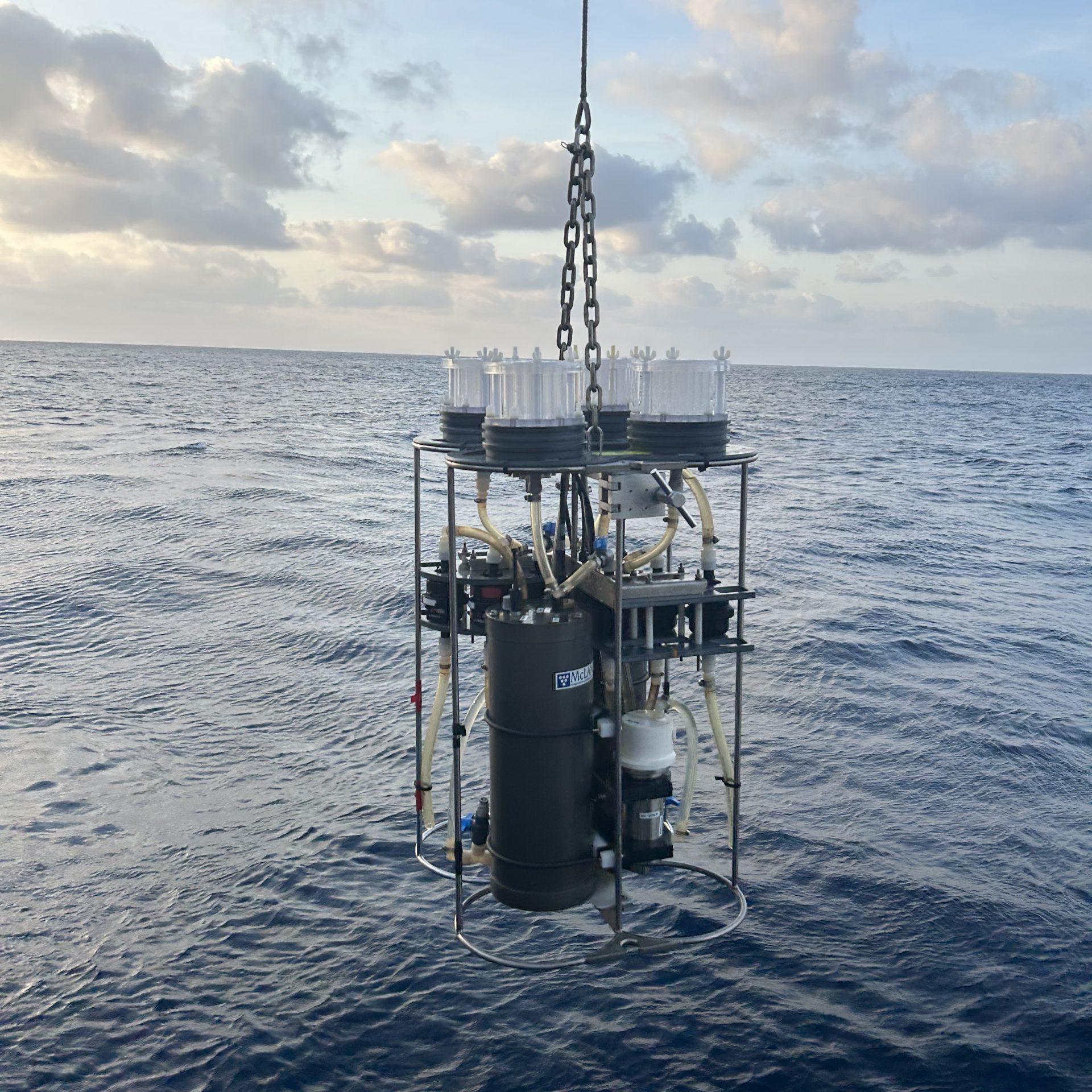
The image on the left is of Clio celebrating its 50th dive. The nubbins on the right side of the exterior are ports for its water filtration mechanisms. The right-most image is of a McLane pump deployment. The clear plastic top pieces are where the filters are located. The lower body consists of a pump to flow water through the filter and batteries.
Clio and McLane pumps provide us with an understanding of the particulate matter in the water column. Rather than taking measurements on seawater, we use what was collected on the filter after water has flowed through it for a period of time. To make measurements on dissolved species, we use seawater collected from a rosette. A rosette can either be equipped with conductivity, temperature, and depth sensors, or it can be trace metal clean. Our trace metal clean rosette was used to measure concentrations of trace elements throughout the water column. These measurements can be coupled to other biological measurements which helps inform how trace metals are taken up by organisms to assist in their physiological processes.
A rosette deployment is not an autonomous process. Once it is in the water, a scientist has to tell the instrument when to close a bottle to collect water at a certain depth. At stations where the water column goes down over 4 kilometers, a rosette deployment can take many hours.
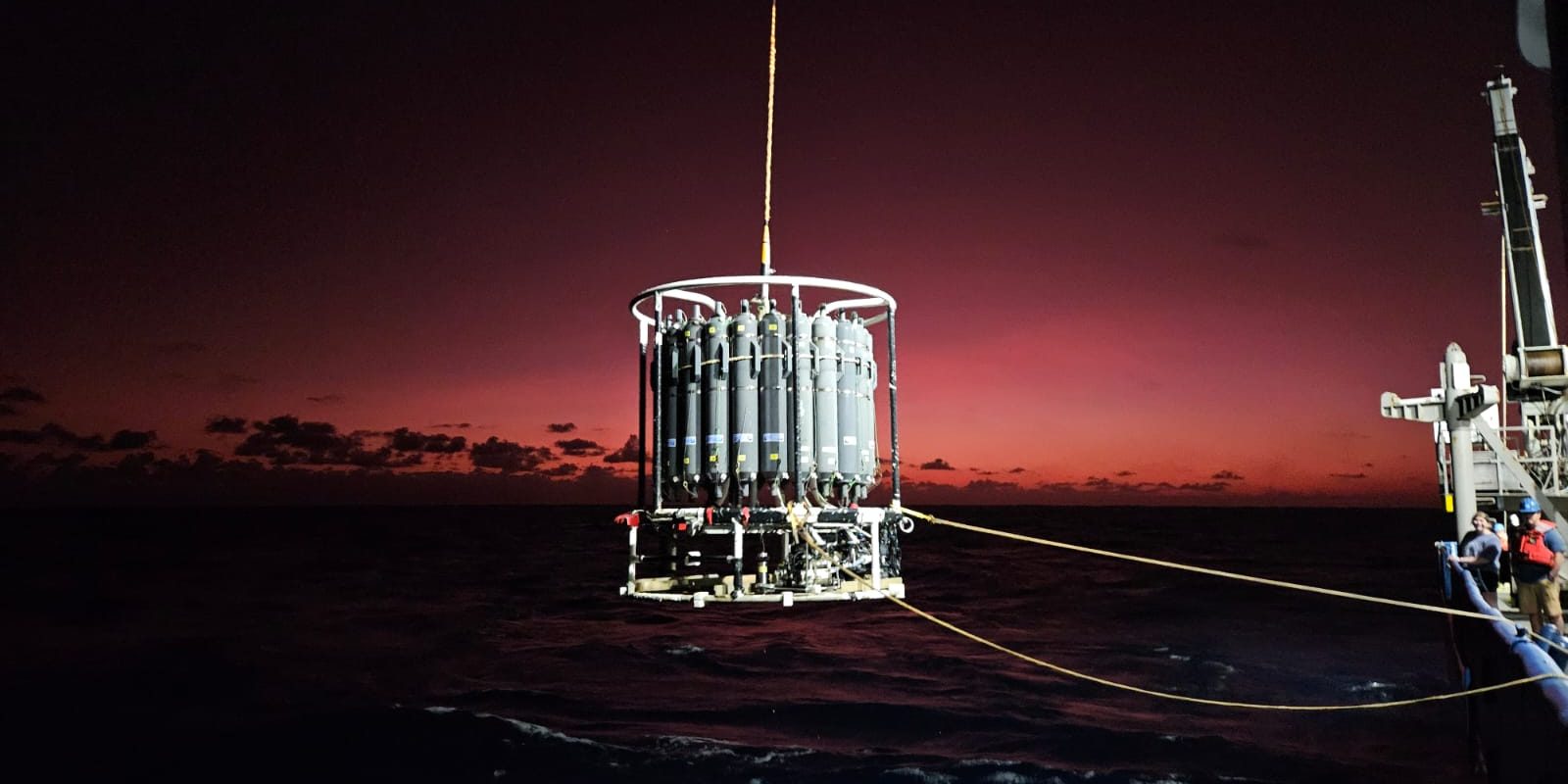
This image was taken as the CTD rosette was being recovered at dusk. The rosette is equipped with 24 Niskin bottles, each holding 12 L of water that can be analyzed for various measurements (including but not limited to Ammonium concentrations, Alkalinity, dissolved inorganic carbon, pH, etc.).
What does a typical work day look like for you all?
Our cruise was unique in that we didn’t have set working hours, so our motto was “sleep when you can.” This makes it sound like we weren't sleeping at all, but in reality, we all got to sleep, just not usually in the “normal” sleeping hours. We weren’t assigned a specific watch shift like the ship's crew because we would get to our stations at different times, and then we would take action from there. Because of this, sometimes we would be up late into the early morning sampling, but then have the day to catch up on sleep. We had a schedule of instrument deployments we would follow each time, so once we got to the station, we had an idea of how long we had until we started working.
Most people completed prep work before their instrument was deployed, helped out in the deployment and recovery, and would begin processing samples after the instrument was recovered. This looks different for every instrument, but the general idea is the same.
Does anything ever go wrong?
On our cruise, nothing catastrophic happened, which is great news! Some cruises have lost instruments to the sea or people have gotten injured, but this doesn't happen very frequently. The most common error that we experienced on our cruise was Niskin bottles not firing, so the rosette would come back up empty. Although this is far from detrimental, it does mean that we had to spend another hour or so re-deploying the rosette.
On any ship, there are engineers and mates working to drive the ship and keep everything operating normally. Other crew members such as marine technicians and deck hands are around to keep the science operations safe. The marine technicnan’s main job is to communicate with the mates and tell them when instruments are being deployed. Without the robust team which research vessels employ, quality science would not be possible.
What is living on a ship like?
Living and working on a ship is so much different than living and working on land. For one thing, there is no commute anywhere! You are sleeping, eating, and working quarters are all packed onboard. Because we were all working long days, it’s incredibly convenient to not have to travel far for a snack or meal break, or to catch some z’s. In my opinion, one of the biggest perks of going out to sea for fieldwork is never having to cook for yourself! The galley crew support all of the people on the ship for 3 to 4 meals per day plus snacks.
Sometimes we would have long transits between stations, so we would have a few days where we didn’t have to work. In those instances, you can normally find scientists hanging out in the lounge room, working out in the gym, sunbathing on the back deck, or working on their computers in the office area. It was nice to have some days off in between all the chaos so we could get caught up on other responsibilities. There were many movie nights on our cruise including but not limited to Harry Potter marathons, The Witcher, The Life Aquatic, and more. It’s a unique experience to be involved in intense deck operations with scientists and also watch them shove popcorn in their face while singing along to Mama Mia in a 24-hour period.
Cruises present an excellent opportunity to dive into your science. From my experiences, there is no other way someone can disconnect to the same extent. Some people may not like it, or it may make them feel uncomfortable, but for me, I find I feel completely refreshed after getting back from a cruise. It gives you a great jump start for your research as well as a super fun experience to look back on.
Read more of Through the Porthole Issue #9
Learn more about Through the Porthole
Learn more about the MIT-WHOI Joint Program